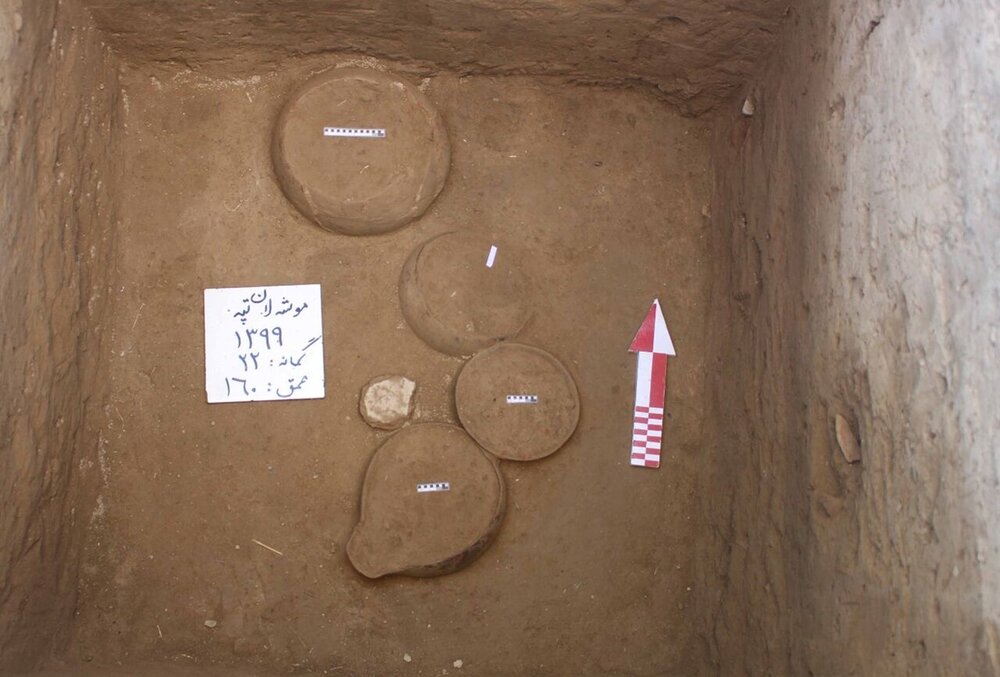Seven-thousand-year-old clay vessels unearthed in Iran

TEHRAN – A total of six clay vessels, which believed to date back to the fifth millennium BC, have recently been unearned in Moushelan Tepe, a significant archaeological site 65 km west of Tehran.
“The vessels, which probably belong to a burial chamber, were discovered along with some pottery and bone fragments as well as some historical layers of the soil during an archaeological survey aimed to demarcate Moushelan Tepe,” IRNA quoted archaeologist Siavash Saraqi, the head of the survey, as saying on Tuesday.
According to studies conducted in this area, 10 architectural surfaces along with graves and pottery fragments belonging to the fifth and fourth millennium BC have been identified yet, he added.
“In general, it is assumed that the “thickness” of the ancient layers in Moushelan Tepe reaches about 6.70 meters.”
Talking about other achievements in the historical site, Saraqi noted: “The archeological team carved 26 trenches on the site in various directions. Fortunately, as a result of those speculations, in addition to the aforementioned relics, a pottery with a red gutter with geometric and animal motifs (depicting a goat), which is concurrent with those found in the Cheshmeh Ali [an archaeological site in southern Tehran], was discovered; a unique finding in its kind.”
“The recent study showed that, contrary to the topography of the site and previous commentaries, the dimensions of the site are more than previously announced and the site of Moushelan Tepe is stretched in an east-west direction and unfortunately a large part of It is generally leveled on the west side tuned into to gardens and villa construction projects by the locals,” the archaeologist concluded.
Moushelan Tepe was first excavated by Hakemia in 1958-1959 and again by Navaie in 1978-1979.
The Cheshmeh Ali cultural period (ca. 5300-4300 BC), followed by the Sialk culture (near the modern city of Kashan in central Iran), not only covers the North of Central Iran region, but also it is evidenced in neighboring regions. The genesis of this culture has coincided with the consolidation of sedentary-farming in this cultural region.
AFM/MG
Leave a Comment